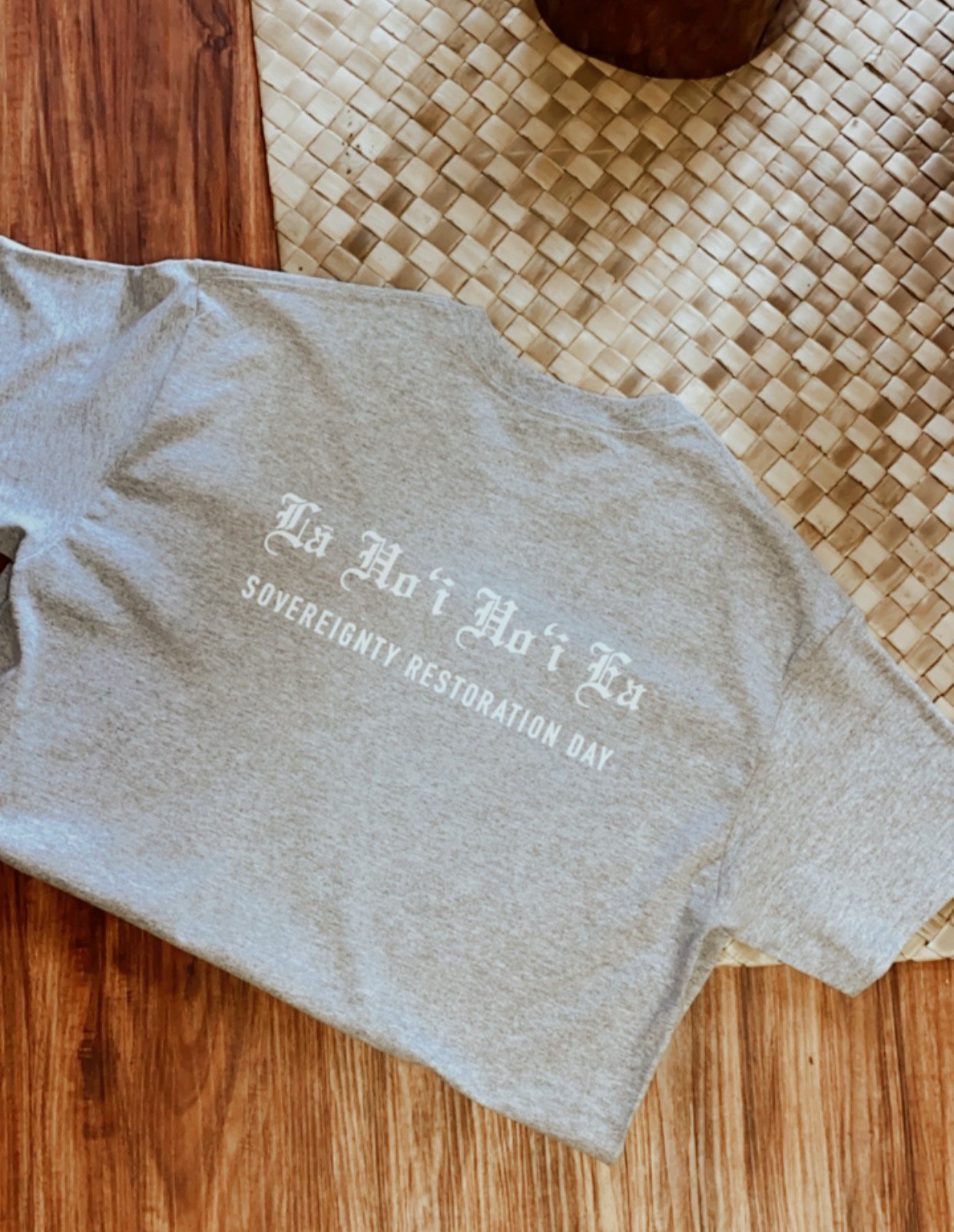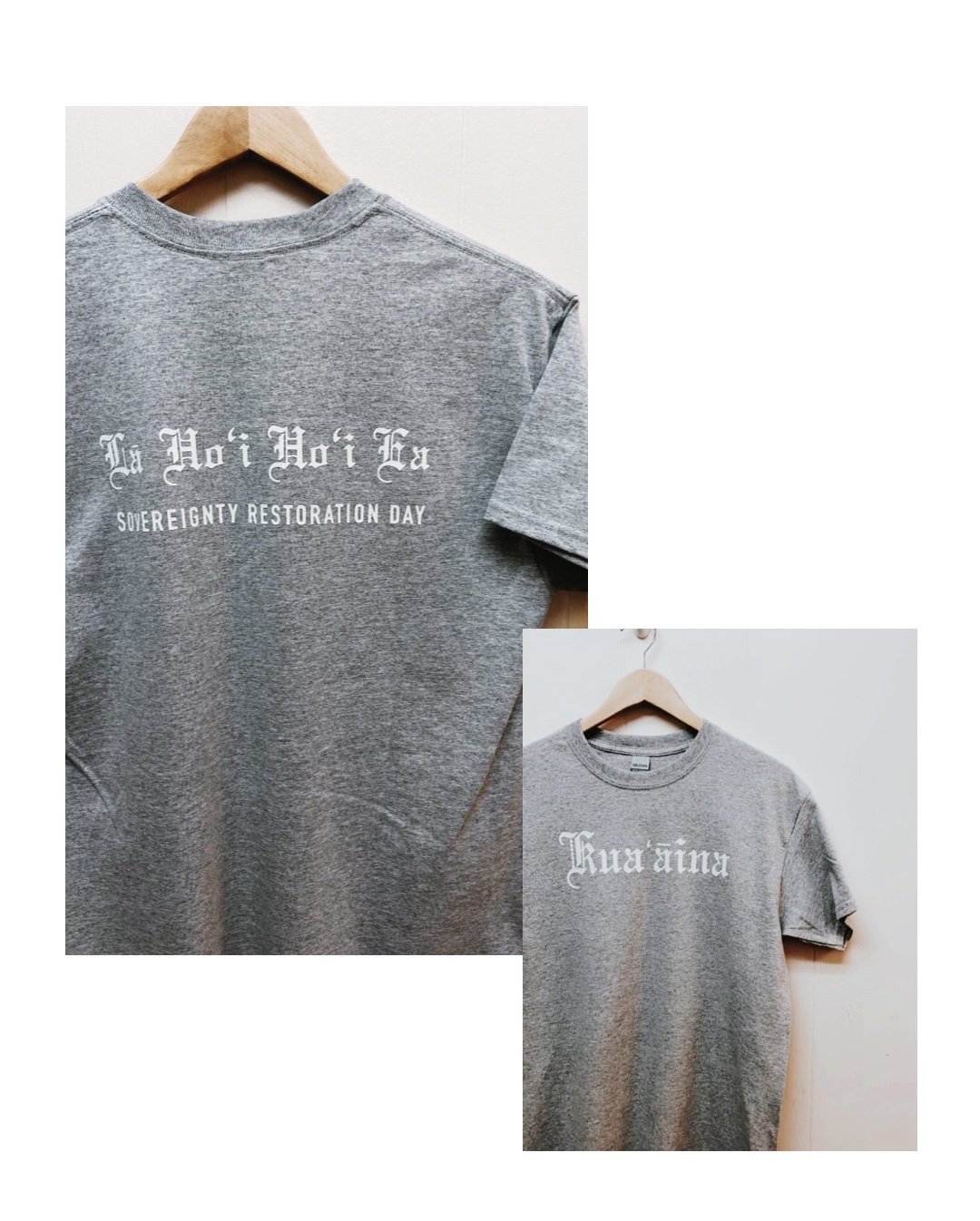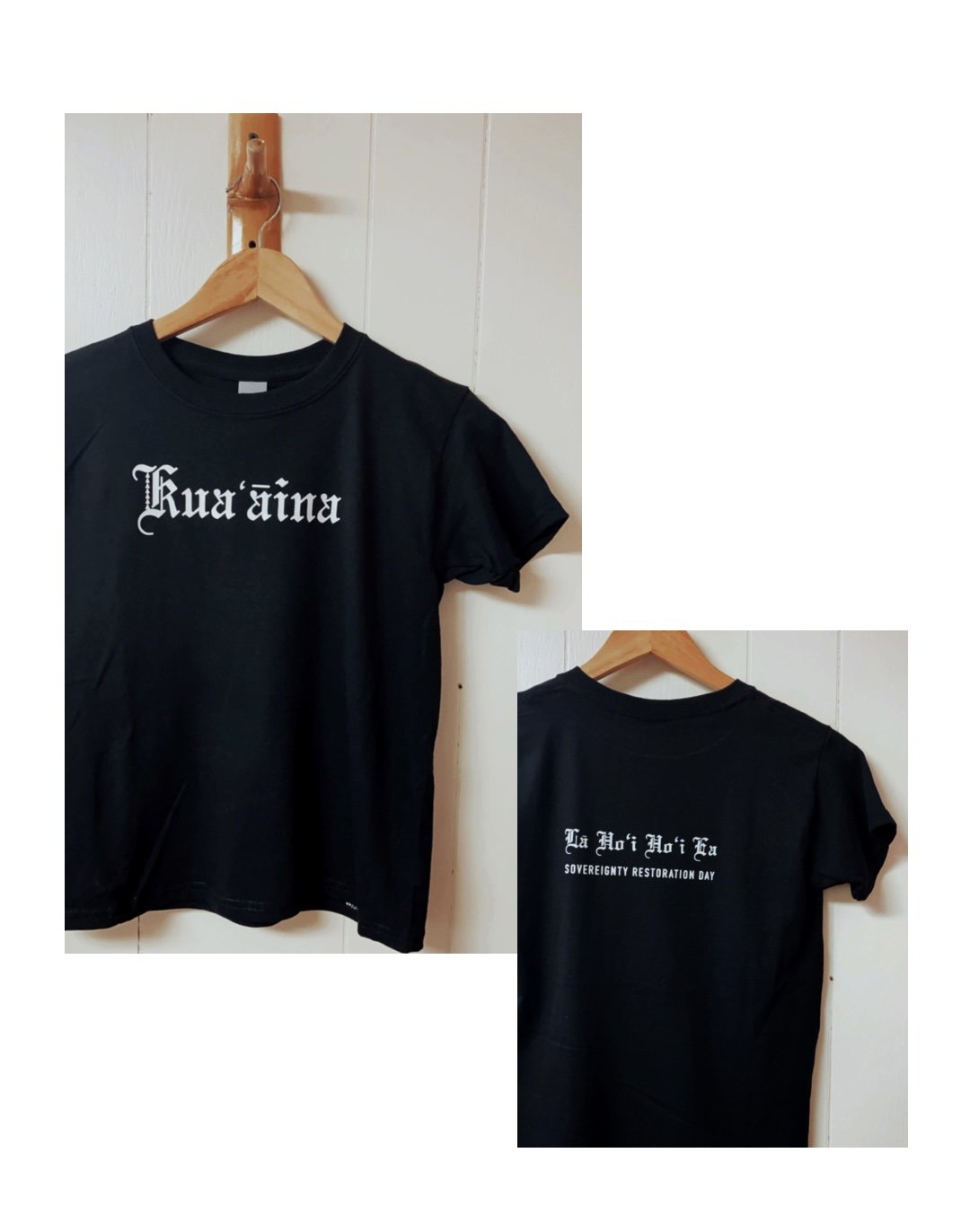 Image 1 of 3
Image 1 of 3

 Image 2 of 3
Image 2 of 3

 Image 3 of 3
Image 3 of 3




Lā Hoʻihoʻi Ea x Kua'āina T
On July 31, 1843, under order of Her Majesty Queen Victoria, Queen of Great Britain and Ireland, Rear-Admiral Thomas orders the lowering of the British flag and the raising of the Hae Hawai'i (Hawaiian flag) in Honolulu, signaling the restoration of sovereignty to the Hawaiian Kingdom monarchy after a five month occupation of the country by British forces. Richard Darton Thomas was serving as Commander in Chief of Her Britannic Majesty's Ships and Vessels in the Pacific.
Miriam Auhea Kekāuluohi [Kaʻahumanu II] served as Kuhina Nui (Premier/Co-regent) during the events of the 1843 occupation of the Hawaiian Kingdom and subsequent restoration of sovereignty on July 31, 1843.
July 31 is a national holiday known as Lā Hoʻihoʻi Ea (Sovereignty Restoration Day). King Kamehameha III established this holiday in a days-long celebration following the rightful return of sovereign government to Hawaiʻi by the United Kingdom, after an illegal seizure by one of their representatives. He proclaimed, “Ua mau ke ea o ka ʻāina i ka pono”–the ea (sovereignty, life, breath) of our land is perpetuated through justice. Hawaiians continue to breathe life into our sovereignty, and one way we do this is to celebrate ka Lā Hoʻihoʻi Ea. After decades of suppression, the celebrations were revived in 1985 by Uncle Kekuni Blaisdell and other kānaka aloha ʻāina as a way to give voice to Hawaiian independence and to issues surrounding the return and demilitarization of Hawaiian lands.
On July 31, 1843, under order of Her Majesty Queen Victoria, Queen of Great Britain and Ireland, Rear-Admiral Thomas orders the lowering of the British flag and the raising of the Hae Hawai'i (Hawaiian flag) in Honolulu, signaling the restoration of sovereignty to the Hawaiian Kingdom monarchy after a five month occupation of the country by British forces. Richard Darton Thomas was serving as Commander in Chief of Her Britannic Majesty's Ships and Vessels in the Pacific.
Miriam Auhea Kekāuluohi [Kaʻahumanu II] served as Kuhina Nui (Premier/Co-regent) during the events of the 1843 occupation of the Hawaiian Kingdom and subsequent restoration of sovereignty on July 31, 1843.
July 31 is a national holiday known as Lā Hoʻihoʻi Ea (Sovereignty Restoration Day). King Kamehameha III established this holiday in a days-long celebration following the rightful return of sovereign government to Hawaiʻi by the United Kingdom, after an illegal seizure by one of their representatives. He proclaimed, “Ua mau ke ea o ka ʻāina i ka pono”–the ea (sovereignty, life, breath) of our land is perpetuated through justice. Hawaiians continue to breathe life into our sovereignty, and one way we do this is to celebrate ka Lā Hoʻihoʻi Ea. After decades of suppression, the celebrations were revived in 1985 by Uncle Kekuni Blaisdell and other kānaka aloha ʻāina as a way to give voice to Hawaiian independence and to issues surrounding the return and demilitarization of Hawaiian lands.